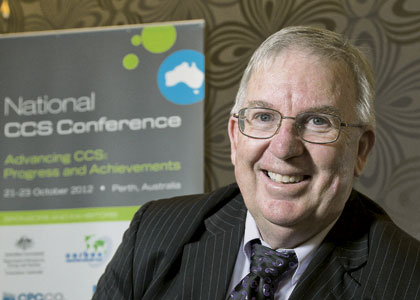

WESTERN Australia’s first onshore carbon-capture and storage project has proceeded to the next step following positive results from initial investigations.
The Department of Mines and Petroleum is exploring the viability of capturing carbon dioxide from industrial facilities in the Harvey region and then transporting and storing it underground.
The project, known as the South West Hub, is currently in preparation phase and working to establish the suitability of an underground sandstone reservoir for the carbon storage - or geosequestration.
Project leader and DMP carbon strategy coordinator, Dominique van Gent, told the National Carbon Capture and Storage conference held in Perth this week the first exploratory drilling program had just been completed, with positive results.
The drilling had confirmed indications of a sandstone reservoir about 1,500 metres in size and 2.5 kilometres underground, known as the Lesueur reservoir.
“The results have given us the confidence to move to the next stage,” Mr Van Gent said.
“Every time we do something that’s what we’re asking ... can we get the confidence to move forward?”
The results enabled the project team to plan for the next drilling program and three-dimensional seismic mapping of the underground area, which would be undertaken next year. Commonwealth funding of $52 million has been committed to the project so far through the CCS National Flagships Program; that’s part of $330 million total Commonwealth funding earmarked for the project.
However Mr Van Gent told WA Business News that was just a fraction of the total cost of establishing a workable end-to-end system, which would likely creep up to the $1 billion mark.
About two thirds of that cost would be privately funded by industry partners, which had created an unincorporated joint venture.
The industry partners - Alcoa of Australia, Griffin Energy Developments, Perdaman Chemicals and Fertilisers, Electricity Generation Corporation, and Premier Coal -would be expected to front up with the cost of implemented carbon capture technology within their facilities, which was much more expensive than transportation and storage.
Mr Van Gent said that technology would not be necessary for another couple of years, during which time the department needed to prove carbon storage was even possible.
“I can’t stand here with my hand on my heart and say it will work,” he said.
“We are trying to give them (industry partners) the confidence to make that investment.”
The South West Hub project is in addition to the carbon capture and storage project being launched in conjunction with Chevron’s Gorgon liquefied natural gas development on Barrow Island.
That development is hoped to ultimately store between 3 million and 4 million tonnes per annum.
The South West Hub project is anticipated to be able to store 5mt to 6mtpa by 2020.
The carbon dioxide will be taken from existing and planned carbon producing facilities, including Perdaman Chemicals and Fertilisers’ proposed 2mtpa coal-to-urea plant.
However moving the project beyond the preparation phase will require the implementation of statewide legislation.
An exposure draft introducing the Western Australia Greenhouse Gas Storage Bill was released last year, which Environment Minister Bill Marmion told the conference would be introduced to parliament in the near future.






